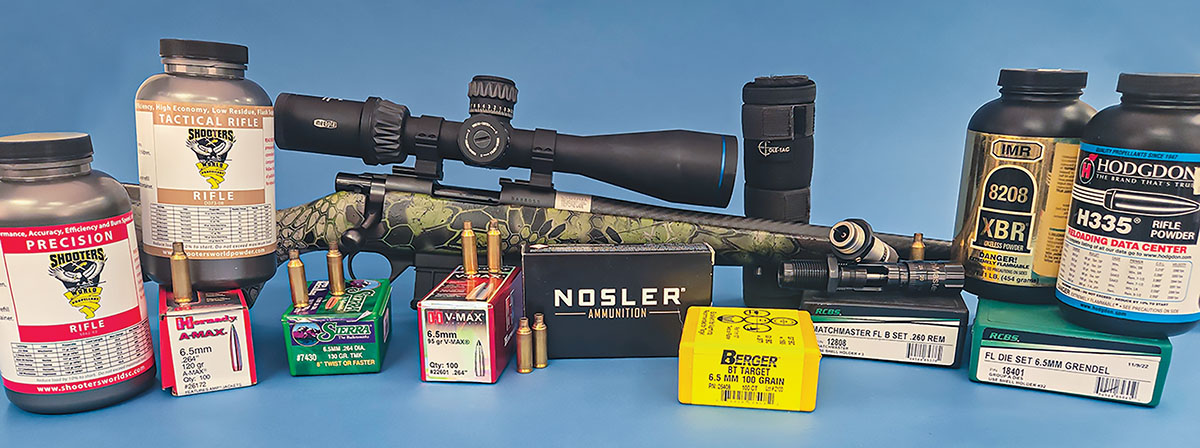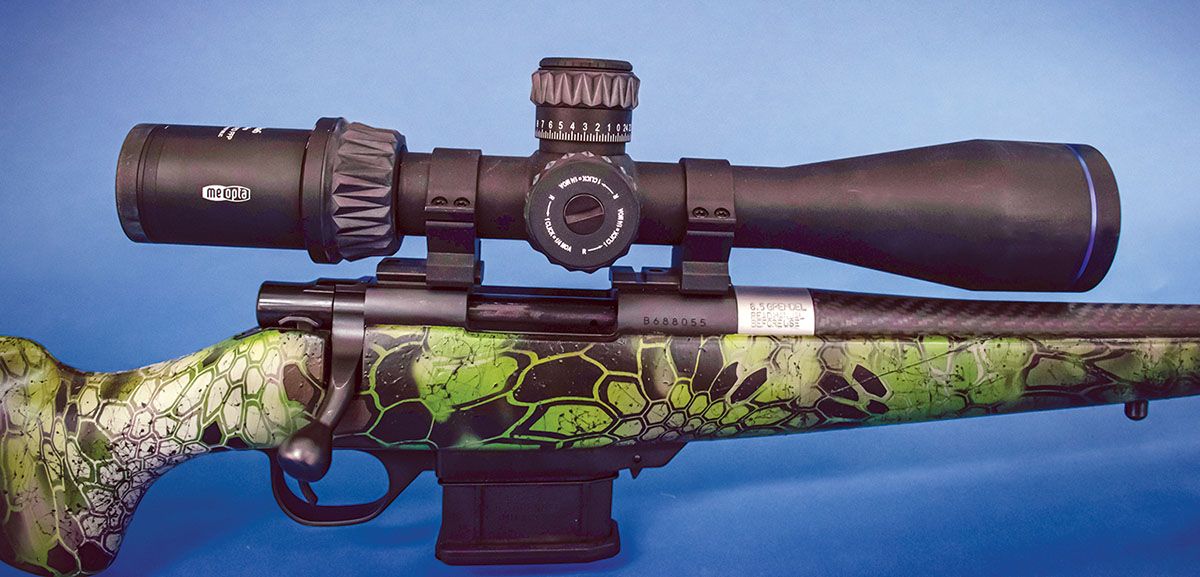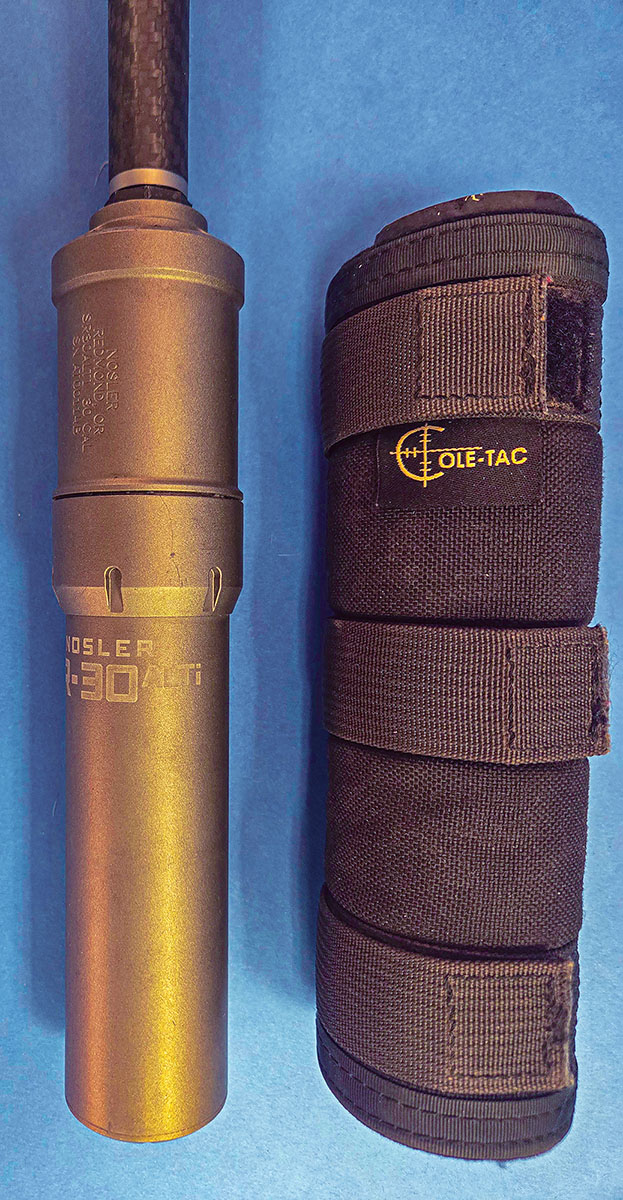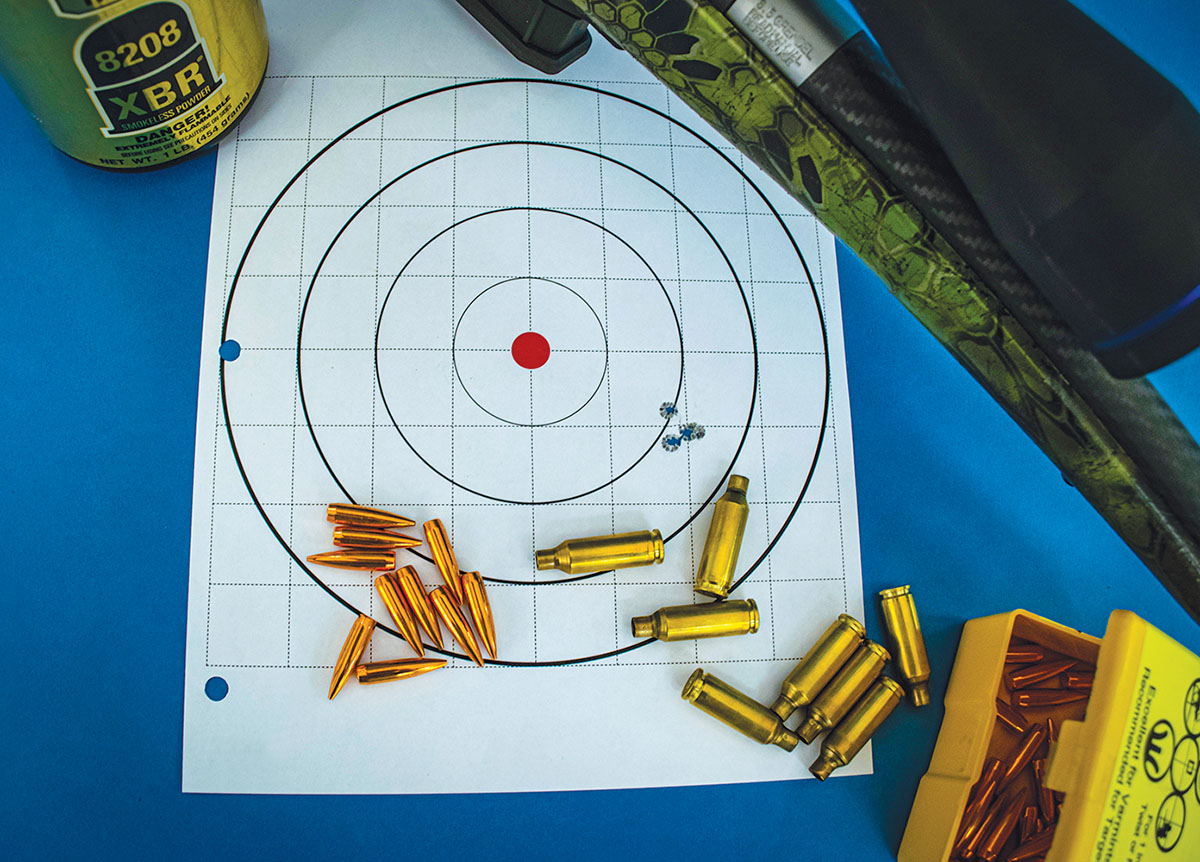Reloader's Press
Howa Carbon Elevate 6.5 Grendel (Two Years Later)
column By: Jeremiah Polacek | April, 25

The Howa Carbon Elevate weighs 4 pounds, 10 ounces and features a 20-inch carbon fiber wrapped barrel and a Stocky’s carbon-fiber stock in Kyrptek Altitude camouflage.
The previously mentioned aspects are all mandatory in my book before I declare a rifle to be “good” or even worthy of writing about. Accuracy, precision, reliability and handling are all items that must be tested and retested. This is the story of two years of testing, hunting and spending time in the field with this rifle and cartridge.
When the rifle was first received, the usual inspection was conducted. It was chambered in 6.5 Grendel and the fit and finish looked good. The stock is a carbon fiber stock made by Stocky’s Stocks with a Kryptek Altitude camo pattern. The first thing you’ll notice when handling this rifle is just how remarkably light it is. Weighing in at a mere 4 pounds 10 ounces without an optic. This makes it a great option for long hunts where weeks are spent carrying a rifle on a backcountry hunt or for use on the back of a horse. The trigger is also exceptionally light – breaking at 2 pounds, 6 ounces on an average of 5 pulls with a Wheeler Engineering trigger-pull gauge. It features a 20-inch
carbon fiber barrel featuring a 1:8 twist. For more specifications and details, go to HowaUSA.com.
When the rifle was first received, the usual inspection was conducted. It was chambered in 6.5 Grendel and the fit and finish looked good. The stock is a carbon fiber stock made by Stocky’s Stocks with a Kryptek Altitude camo pattern. The first thing you’ll notice when handling this rifle is just how remarkably light it is. Weighing in at a mere 4 pounds 10 ounces without an optic. This makes it a great option for long hunts where weeks are spent carrying a rifle on a backcountry hunt or for use on the back of a horse. The trigger is also exceptionally light – breaking at 2 pounds, 6 ounces on an average of 5 pulls with a Wheeler Engineering trigger-pull gauge. It features a 20-inch
carbon fiber barrel featuring a 1:8 twist. For more specifications and details, go to HowaUSA.com.

A wide range of bullet and powder combinations were put to the test in the Howa Carbon Elevate.
Handload tables were assembled and care was taken to change only minor variables, primarily the charge weights. Starline 6.5 Grendel cases and Federal 205M small rifle primers were used exclusively for testing. I wanted to be able to hit maximum pressure in order to present a starting and maximum load in the table, as well as be able to average 25 rounds for a given powder and bullet combination. While there would be some variation in charge weight, it would still provide enough insight to know if a given powder and bullet combination was performing well. It would also be a good place to start conducting five-by-five tests. This is where 25 rounds are loaded and tested in five-shot groups. In the end, you have tested five groups of five shots and have enough information to average group sizes and locations to determine where to zero your rifle and how accurate or how precise that rifle is capable of shooting. In my experience, this is an excellent way to sort out what kind of precision a rifle system is capable of as well as the shooter’s capabilities with said system.

The optic used for testing was a Meopta Optika 6 4.5-27x 50mm mounted in Leupold PRW2 rings.
With the ammunition loaded to high standards and with high expectations, I was eager to start testing.
A Meopta Optika 6 4.5-27x 50mm scope was mounted in Leupold PRW2 rings and a Nosler SR-30 ALTI suppressorwas threaded on for testing. I planned to use this rifle for hunting coyotes and other critters, which meant having a suppressor would make for a more delightful experience. Over the course of a mere two days, over 200 rounds and 40 different loads were tested. Thankfully, the weather was mostly cooperative, which helped keep the environmental variable to a minimum. Cooler temperatures also kept the barrel cooling time down, which meant more time for testing and shooting. I started out by shooting 40 rounds of Nosler factory ammunition – 20 rounds to break in the barrel and another 20 rounds fired in five-shot shot groups. The average group size for 20 rounds was 1.20 inches, just barely breaking the inch mark. The barrel was then cleaned and I started shooting my handloads.
A Meopta Optika 6 4.5-27x 50mm scope was mounted in Leupold PRW2 rings and a Nosler SR-30 ALTI suppressorwas threaded on for testing. I planned to use this rifle for hunting coyotes and other critters, which meant having a suppressor would make for a more delightful experience. Over the course of a mere two days, over 200 rounds and 40 different loads were tested. Thankfully, the weather was mostly cooperative, which helped keep the environmental variable to a minimum. Cooler temperatures also kept the barrel cooling time down, which meant more time for testing and shooting. I started out by shooting 40 rounds of Nosler factory ammunition – 20 rounds to break in the barrel and another 20 rounds fired in five-shot shot groups. The average group size for 20 rounds was 1.20 inches, just barely breaking the inch mark. The barrel was then cleaned and I started shooting my handloads.

All load development was conducted with a Nosler SR-30 ALTI suppressor with a Cole-Tac suppressor cover to help reduce the mirage while testing. The suppressor did a great job of reducing the noise and recoil. Thanks to its lightweight construction it added little weight to an already light rifle.
Upon disassembly, it was clear that something was binding within the bolt. Thankfully, Howa M1500 bolts can be disassembled without any tools, though a pen can be a handy aid for doing so. The bolt, along with the rest of the rifle, was deep cleaned and the bolt was then blown out with compressed air. This solved the issue and the rifle has continued to function flawlessly since then. I imagine that with the addition of the suppressor on this rifle, some carbon or grit somehow found its way into the bolt body. This is likely due to the extra backpressure added from the suppressor, which bound up the bolt. It wasn’t a major issue and it was an easy fix, but it was interesting enough to mention here.

The most accurate load tested used IMR-8208 XBR powder and the sadly discontinued 100-grain Berger BT Target bullet. This single 5-shot group measured out to .32 inches. Out of all the loads tested with this bullet and powder combination, not a single load broke one inch. A 25-round group using 29.0 grains of IMR-8208 XBR measured out to .73 inches, proving that this rifle is capable of consistent sub-MOA performance.
The rifle is a joy to shoot, the recoil is almost nothing with the suppressor on it, this rifle and cartridge combination would make for an exceptional youth cartridge for medium-sized game and it is an excellent choice for varmint and predator hunting as well. Since I received my sample rifle, they have added the 22 ARC as an option for the Howa Carbon Elevate as well. In my mind, that would make for an ideal varmint and predator rifle. It is much appreciated after specifically requesting that this cartridge be offered in this rifle.
It is not very often I get to give a glowing endorsement to a rifle but there is no doubt from a practical standpoint – with all the ways a rifle should be measured, precision/accuracy, weight, reliability, etc. – Howa hit the nail on the head with this rifle!
.jpg)


